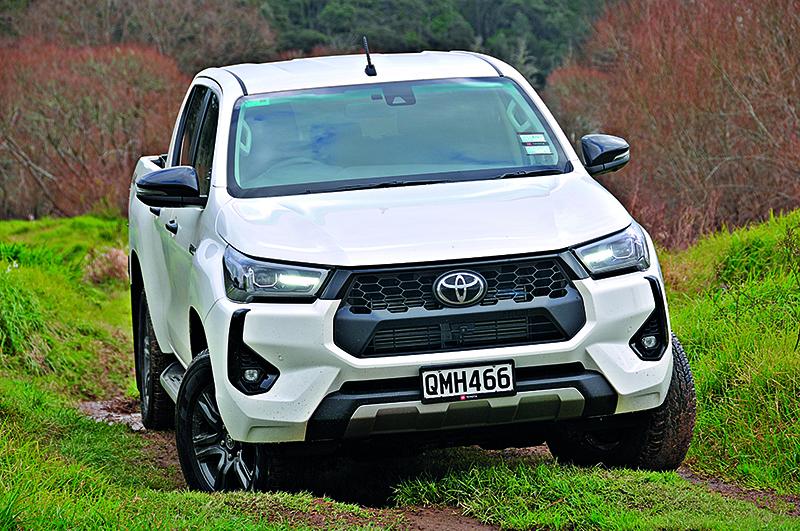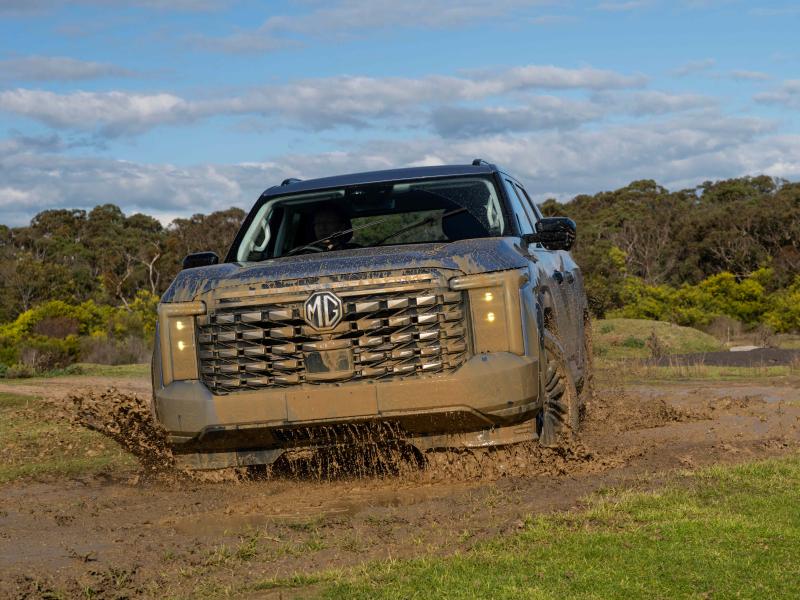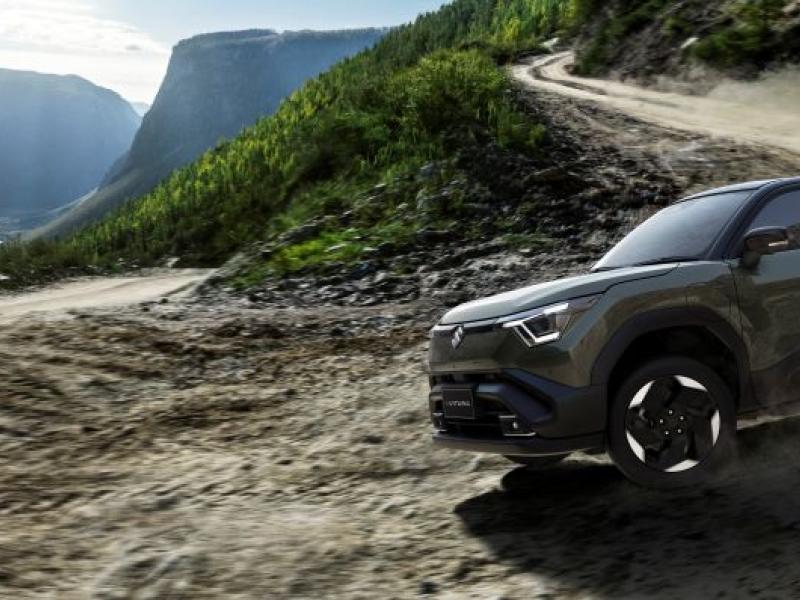It’s been a while since NZ4WD tested a Hilux, and getting acquainted with the 2024 Hilux was informative. This one came on the back of the very good wide-body Hilux SR5 Cruiser we tested recently. This month, we try the ‘regular’ Hilux SR5.
The ‘news’ in this test is of course the application of hybrid technology to these immensely capable vehicles. Despite the claims of rivals now dropping hybrid models in the market, despite the same rivals dissing the brand’s achievement because the system is ‘only’ a mild hybrid, Toyota will always be the first manufacturer to bring hybrid technology to the New Zealand 4WD ute market.
This system is attractive across the full spectrum of Hilux buyers, because it is the most user-friendly electric-assist drivetrain possible.
The battery is small enough to fit under the rear seat, so doesn’t eat up passenger or cargo space or require a plug in each evening. It also brings no huge weight penalty to the design.
It makes auto-stop at traffic lights a reality, pushing fuel use figures down.
Best of all, it adds ‘push’ at low speeds/revs, helping Hilux get off the line smoothly and quickly.
Hybrid versions of the Hilux are available in SR and SR5 trim, double cab flat-deck and double cab wellside versions. In other words, the four Hilux best-sellers.
On the road, the hybrid is handy enough exiting tight corners, leaving intersections. Otherwise, it’s almost imperceptible.
Off-road, it helps the truck idle over rough ground with minimal use of accelerator, adding smoothness to careful progress across the rough.
Toyota’s Hilux is without doubt the original and most enduringly successful of all diesel double cab 4WD utes.
Mainstay of government departments, mining outfits, forestry crews. More recently, ‘flashed up’ to meet the challenge of rivals that have turned a bit urban. Like most of those rivals, Hilux has grown, but not excessively.
It is likely that most 4WDers have driven or ridden in a Hilux at some point. It’s been around forever. Arguably, the Hilux really did create the 4WD double cab ute category.
So, what’s new? What’s different? The 2024 Toyota Hilux has gone mildly electric. Selected models including the Hilux SR5 4x4 dual-cab auto now come with what Toyota calls V-Active Technology, a mild hybrid technology that’s making the drive even sweeter and helping Toyota meet its global emissions targets.
V-Active uses a small electric motor and 48-volt battery to turn off the engine at the traffic lights to save fuel, provide a minor boost under acceleration, and lower the engine idle speed. Fuel economy is improved, carbon emissions reduced, and the added ‘push’ is right where it’s needed: down low in the rev range.
Toyota claims a potential 10 per cent improvement over an orthodox auto-equipped SR5 turbo-diesel. According to the official figures, the new hybrid SR5 is rated at 8.5l/100km. We found it easy to hit that number, and that translates to extended range on long trips.
Combining an advanced electric energy power system with the enduring strength of diesel, the Toyota Hilux Hybrid engine unleashes 150kW of power and 500Nm of torque. The mild hybrid adds bottom end urge to the equation.
The SR5 and SR5 Cruiser are powerful, torque-rich 4WDs, but they aren’t the most grunty Hiluxes. That honour goes to the GR version, which has 165kW and 550Nm. The GR goes some way toward addressing Ford’s performance leader, the Ranger Raptor, though in a less extrovert fashion.
Stepping up from a quiet idle, the engine has a robust diesel sound that settles down when cruising at speed. It is well calibrated with the six-speed auto, so forward progress is actually pretty seamless by ute standards. The transmission’s Sport mode aggressively holds onto gears longer and provides noticeable engine braking on down-changes. Shift ratios manually at the lever for more control of engine and road speed. The manual shift is slightly counter-intuitive: push forward to go up a gear and pull back to go down.
There’s also Power, Normal and Eco modes for the drivetrain, which are less obvious in their impact, and an electronic locking rear diff.
The Hilux has a part-time 4WD system that can run in rear-wheel drive, 4-hi and 4-lo. There’s also well-tuned off-road traction control and downhill assist control – which should be aided by the regenerative braking effect as well.
Ground clearance is 216mm, there’s a 700mm wading depth and decent articulation to help navigate the moguls. Approach and departure angles are not listed on Toyota’s website but are broadly similar to the SR5 Cruiser.
What is not new or different is the class-leading tow ratings, which are important to most Hilux buyers. Unbraked, the ‘regular’ tows 750kg; stepping up to the category maximum of 3,500kg for a braked trailer.
The SR5 has its own identity on the road. There’s a new honeycomb grille up front, along with a new front bumper and unique black accent treatments around the fog lights. The ‘blackout’ continues down the sides with the door handles and mirrors and then down at the rear bumper.
Headlights, running lights and fog lights are all LEDs.
In the cab, there’s an eight-inch touchscreen, navigation system and six speaker sound system. The seats are cloth, where the SR5 Cruiser gets leather.
The truck carries over a dual glovebox format from previous versions.
The seats are cloth, with six-way manual adjustment for the driver’s seat and four-way manual adjustment for the front passenger seat. The rear seat has a 60-40 split fold system for cargo carrying inside the vehicle.
There’s Qi wireless charging and additional USB-C charging ports in the SR5 automatic, SR5 Cruiser and GR Sport. The ‘regular’ SR5 runs on grey 17x7.5” aluminium alloy wheels and the mild A/T version of Dunlop’s Grandtrek tyres.
Safety is – as always – a key focus, and the Hilux has a five-star ANCAP safety rating off the back of 2024 testing. Toyota’s Safety Sense suite continues to offer autonomous emergency braking (AEB) with pedestrian and daytime cyclist detection, adaptive cruise control and speed sign recognition.
There’s also lane departure alert, but unlike rivals such as the Ford Ranger, the Hilux does not have self-centring, so it only warns and veers the vehicle back into the lane when it reckons it’s heading in the wrong direction.
Other Hilux SR5 safety items include blind spot monitoring, rear cross traffic alert, trailer sway control, front and rear parking sensors, a 360-degree camera, seven airbags and, for child seats, two ISOFIX mounts and two top tether strap points.
A standout for us is the Pre-Collision System, which uses a radar sensor and a camera to determine whether a frontal collision is imminent. If the system detects a frontal collision with another vehicle, pedestrian or cyclist may occur it alerts the driver with audio and visual alerts and prepares the Brake Assist system to provide maximum braking assistance. If the driver doesn’t brake in time, it will then automatically apply the brakes.
Our SR5 was running on 17-inch A/T version of Dunlop’s Grand Trek tyres which are a step up from the regular H/T versions in terms of all-road, all-weather ability. Quiet enough on tarmac, there’s a decent rubber-void ratio on each edge that gives the tyre more grip in the slop without harming on-road performance. The centre of the tread is more ‘roadie’ and gives the tyre better grip in corners or under braking.
Driving it
We took the truck down to our playground in the Waikato, a bit bold in winter because it’s right alongside the Waikato River and not much above river level. The mudholes there have a base of river silt and clay, quite similar to moly grease.
The river track also has humps and hollows that will expose any tendency of a vehicle to wave a wheel in the air when the axles are crossed up.
This is not a place to bring a crossover or ‘soft roader’.
The ‘regular’ Hilux cruised through the bumps and lumps and slimy mud sections. Here, the narrower track is no disadvantage, in fact it’s arguably a big help in placing each wheel as we edge carefully through the hollows. Add hybrid assist and it cruises through.
Conclusion
It was interesting to climb into a ‘regular’ SR5 after last month’s SR5 Cruiser. The wide track format is available on the SR5 Cruiser and also on the rear-wheel-drive Prerunner, which gets the stance of the 4WD ute without the added weight on transfer case and front diff. Back-to-back, the differences were clear. The wider version is more stable on the road and slightly more comfortable on gravel roads, due to its track, suspension and 18-inch wheels. Off-road, the differences are less obvious.
It’s up to the buyer, though, whether those aspects and the ‘luxe’ upgrades to seats and sound system justify the step-up in price. Hilux SR5 regular: $59,490; Hilux SR5 Cruiser $65,490. Weirdly, that’s a much better price than our cousins are paying across the ditch. Aussie SR5 double cab hybrids cost $68,806.
We are pretty sure the ‘regular’ will continue to enjoy a strong following.






